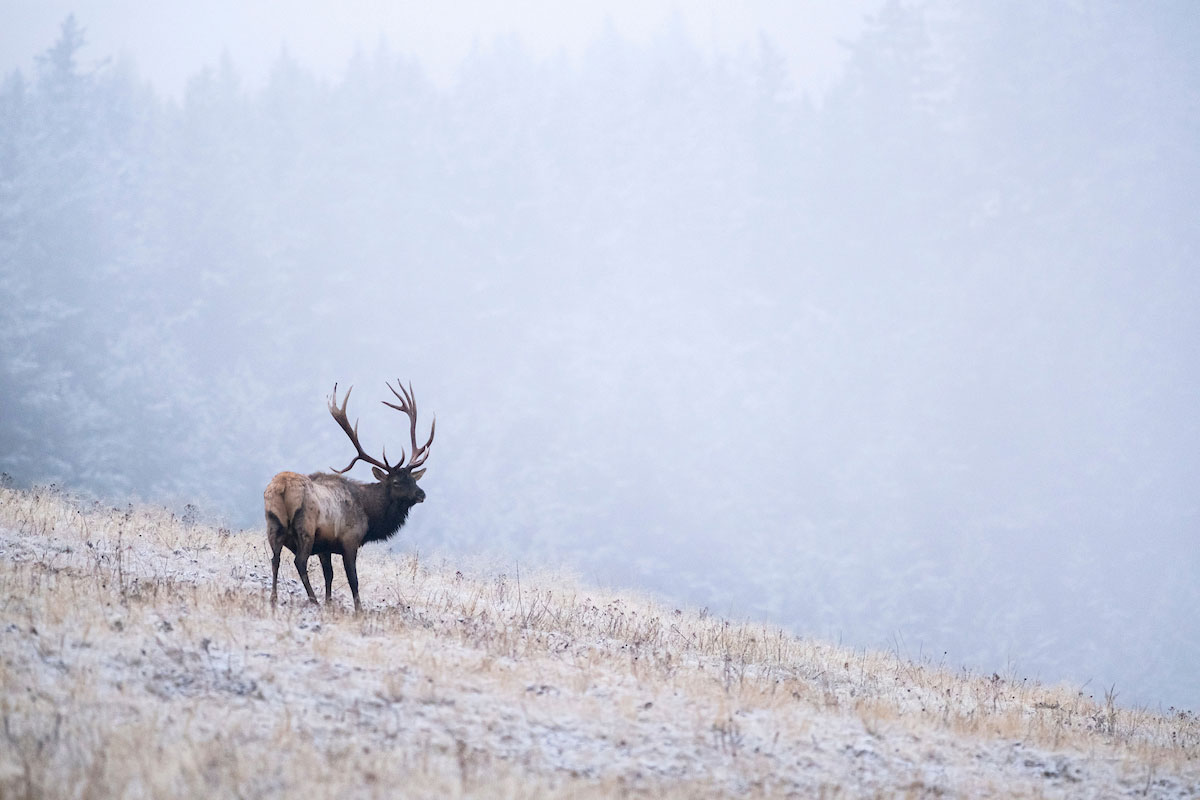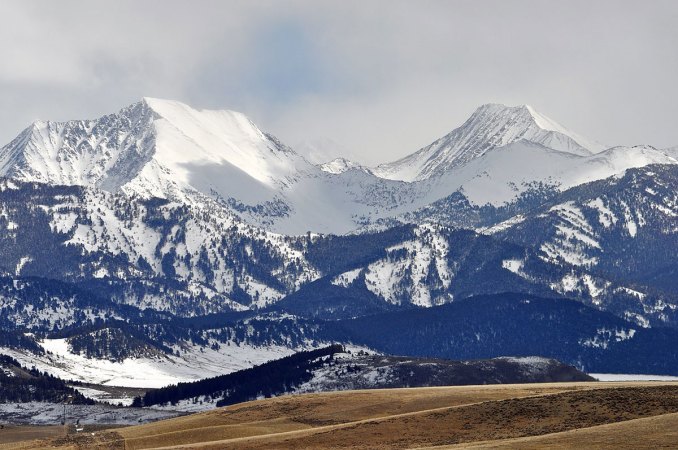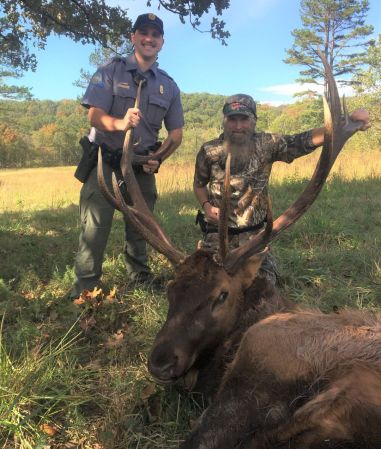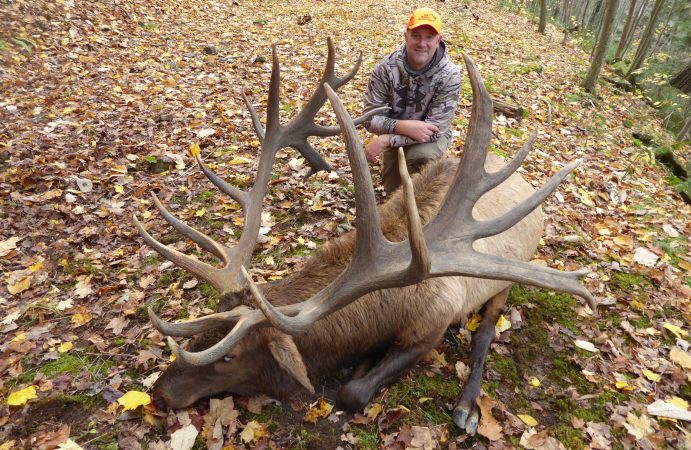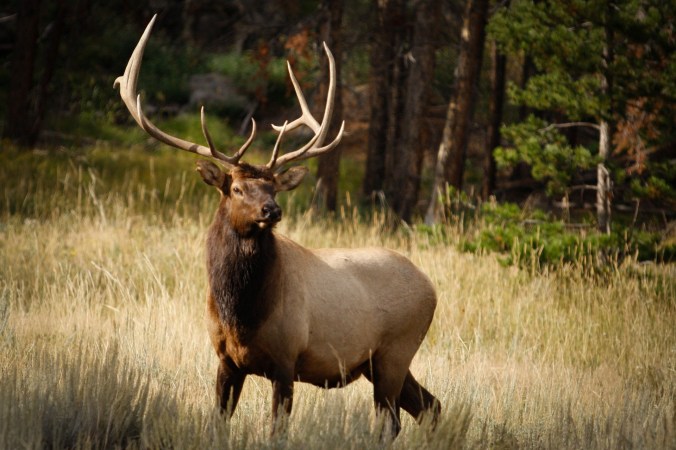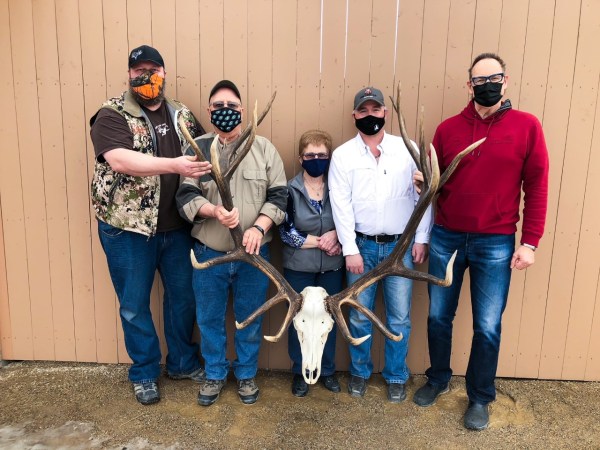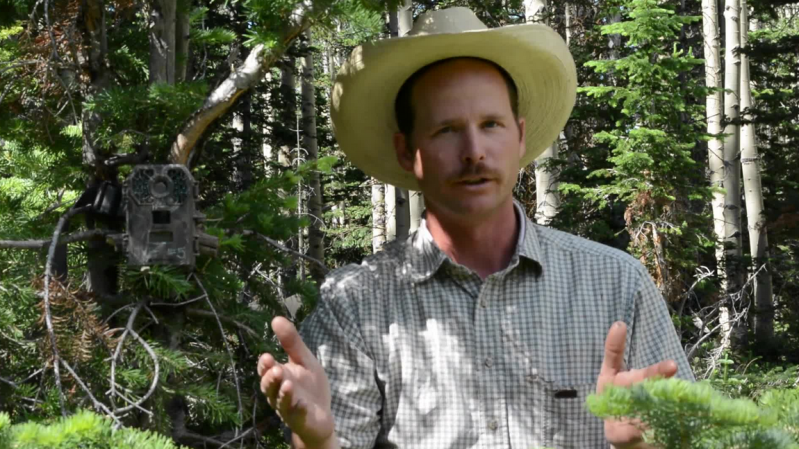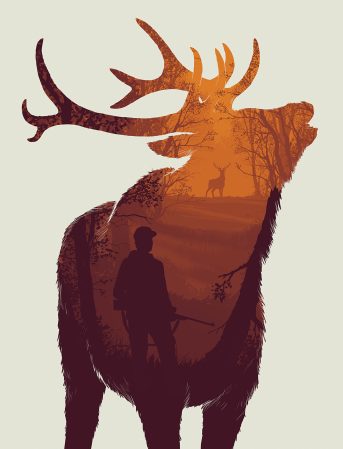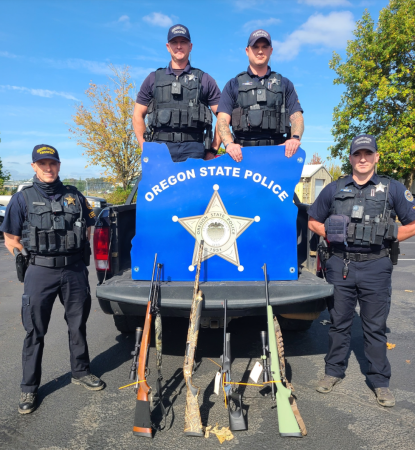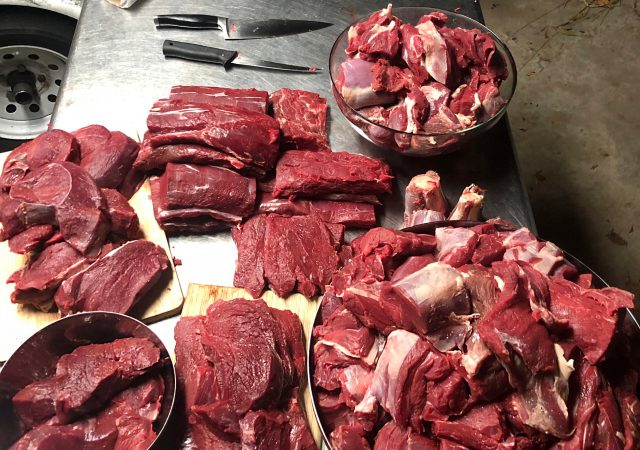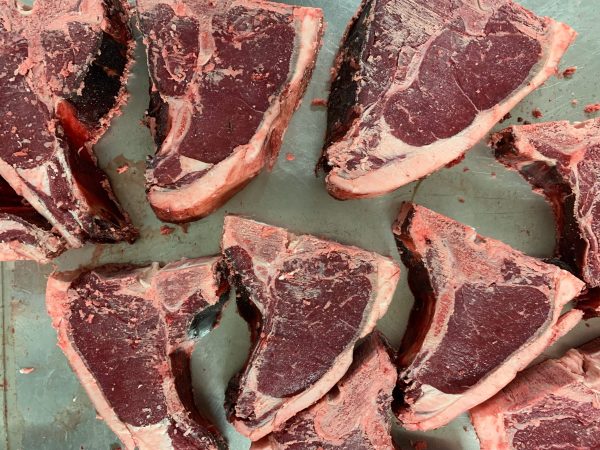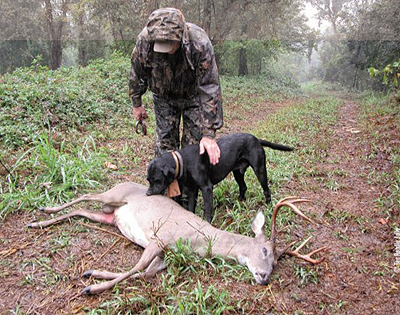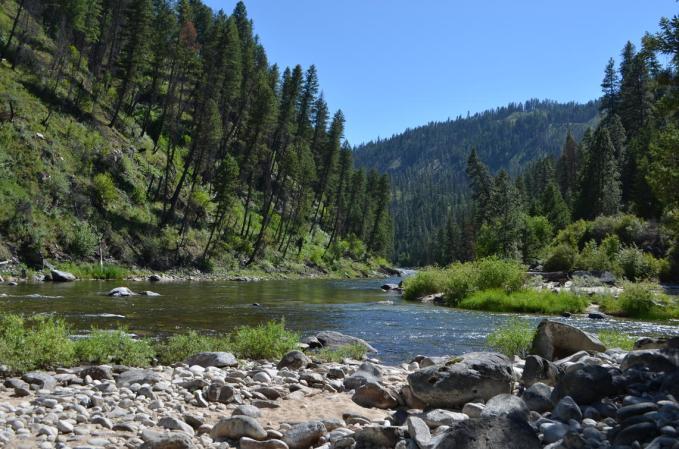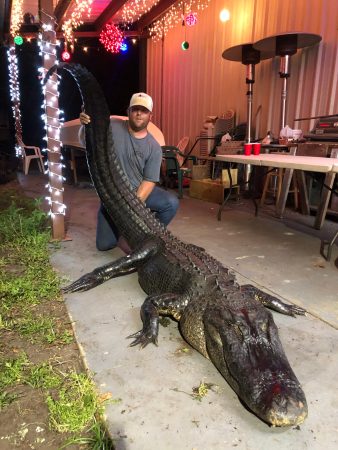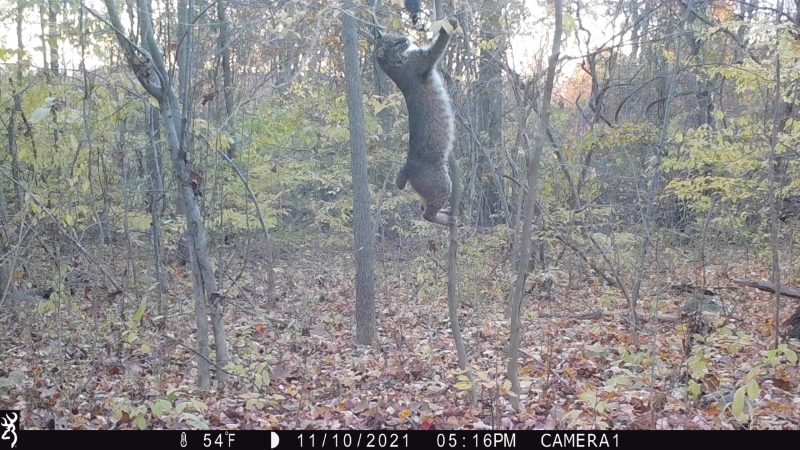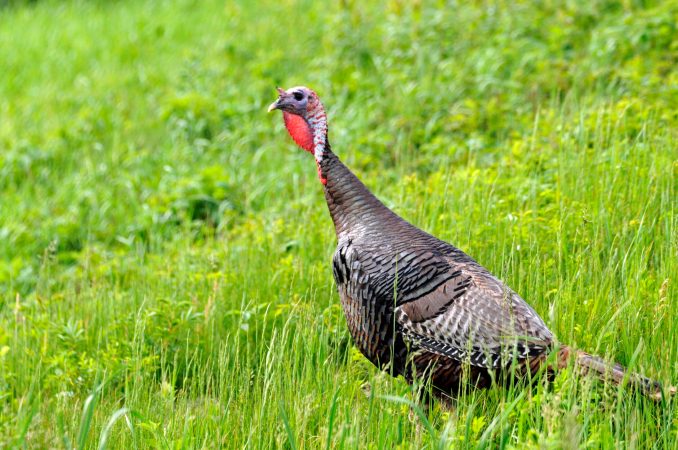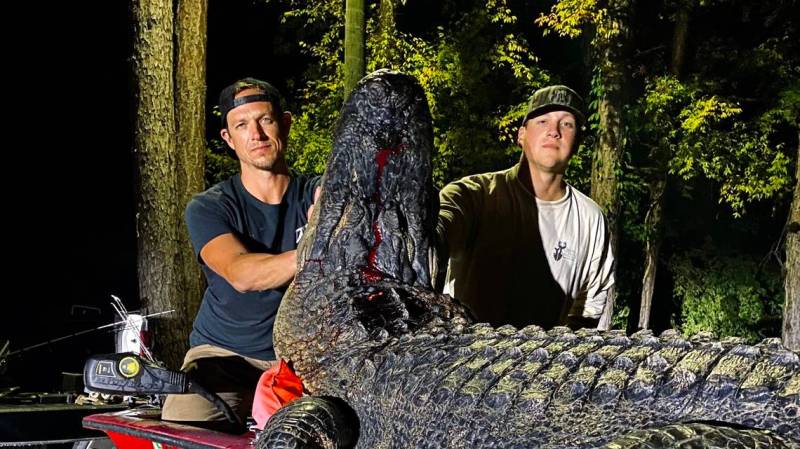On the face of it, the deal that billionaire Dan Wilks got last fall from Montana’s Fish, Wildlife & Parks Department last fall was underwhelming.
Wilks, the non-resident owner of one of Montana’s largest ranches, received a permit from the state agency to hunt trophy bulls on his central Montana land. In exchange, he selected a Montana resident hunter who had drawn a bull permit in the area of Wilks’ ranch and agreed to provide that hunter free access to his 179,000-acre ranch. Additionally, he allowed two cow-elk hunters chosen by FWP to hunt the ranch, which occupies the timbered shoulders of the elk-rich Little Snowy Mountains.
The terms of the agreement were spelled out in a contract between the state wildlife agency and Wilks, a billionaire who lives in Cisco, Texas. The law that allows this tags-for-access agreement was passed by the Montana Legislature back in 2001. The agreement, commonly called a 454, comes from the bill number of that legislation.
The recognition that produced Montana’s 454 contracts is that the long tradition of letting folks you don’t know hunt your land has ended. The result is that many large Montana ranches, especially in the central part of the state, have been “locked up,” as local hunters call it. That is, the only folks who get to hunt these properties are the owners, who typically live elsewhere, and the people they know and invite to hunt. For elk, which are notoriously averse to hunting pressure, these lightly hunted ranches have become sanctuaries, while the adjacent public ground, heavily hunted by landless hunters, has become increasingly elk-less.
In much of America, this arrangement is unsurprising. The idea of letting a stranger hunt your land for free is as foreign as letting them sleep in your bed. But in Montana, this ask-to-hunt arrangement has defined the state’s landowner-hunter relationship for decades. That started changing in central Montana around 20 years ago, about the same time the 454 permits were authorized, and now the only land that hunters can reliably access is either public or it’s private land enrolled in the state’s Block Management program, which pays ranchers and farmers to open their land to hunting.
The problem for Dan Wilks, who has a personal worth of some $1.3 billion derived from his business in the hydraulic fracking industry, is that with the 454 permits he can’t hunt his own ranch, or at least not as often as he might like. That’s because the N Bar Ranch, which Wilks bought with his brother Farris in 2011, is in District 411, one of Montana’s special-permit elk units. In order to hunt elk here, hunters must draw a permit that has between 4 and 18 percent drawing odds for both residents and non-residents.
The idea that birthed the original 454 legislation back in 2001 is that landowners like the Wilks Brothers might be willing to allow some access to public hunters if they could hunt their own land. It’s a tool specifically designed to be used in limited-entry hunting districts like 411, where hunters (landowners included) sometimes wait 20 years or more to draw a tag.
The original version of the law called for FWP to randomly select four hunters for every landowner tag awarded. But in its first 10 years, it seemed as if the 454 was a tool in search of a task. Only one or two of these access agreements were negotiated per year in the first decade of its existence.
That changed with the 2021 Legislature when a revision to the 454s was included in a last-minute “FWP clean-up bill” packed with dozens of provisions and passed with no public input in the last days and hours of the session. The legislation, House Bill 637, revised the 454 agreements to require only three (instead of four) hunters for every landowner tag. Plus, the landowner was given the authority to pick a bull hunter of their choosing to get the coveted tag; FWP was directed to pick the two public hunters.
The changes were certainly noticed by large resident and non-resident landowners, 13 of whom reached out to FWP last fall. One was Dan Wilks, who apparently didn’t draw his 411 tag in the lottery, even though the state reserves 15 percent of tags in limited-permit areas for landowners.
Eager to hunt his own ranch, Wilks got in touch with Mark Taylor, an influential Montana attorney and lobbyist who helped draft some of the provisions in House Bill 637. Later, because of his overall program knowledge, Taylor contacted the FWP director’s office to facilitate the acquisition of Wilks’ 454 permit months after the rest of Montana’s elk hunters had either received their special permits or resigned themselves to hunting the state’s general-tag districts. Taylor says that, besides the Wilks Brothers, he worked with a half-dozen other residents and non-residents who own large Montana ranches to secure these special permits.
On the N Bar, Taylor managed to negotiate a 454 bull permit not only for Dan Wilks, but for seven members of his family, all Texas residents. In exchange—and despite the law not requiring it—the Wilks family picked eight bull hunters from these categories: disabled hunters, youth/novice hunters, wounded veterans, firefighters, law enforcement members, “and other regional community members who contribute to the success of the Ranch.” FWP then selected the 16 cow hunters from a roster of successful applicants for District 411.
In 2011, FWP executed 13 of these elk-access contracts, which doubled in a single year the number of 454s that FWP had administered in the first 10 years of the program. In this way the program is working just as it should: a number of elk were killed by hunters who might not otherwise have had access to these large ranches. But to hear opponents tell it, the other casualty was a way of life in central Montana.
“Bulls for Billionaires,” is how podcaster and television personality Randy Newberg termed the program. As these 454 agreements were brought before the Fish and Wildlife Commission last August for procedural approval, Montana’s resident elk hunters started balking.
Billings hunter Cole Hoefle, speaking before a legislative subcommittee reviewing the 454 program, said the landowner tags “have outraged 70 percent of Montanans who are general public folks recreating on public land. This is a political supermajority, but every [elk management] board, group, and commission seems to be the opposite, composed of ag landowners and outfitters. So it comes as no surprise that legislation represents these special interests.”
Hoefle called the 3:1 ratio of public 454 tags to landowner tags “flimsy” and suggested that “the ratio should look more like 7:1 based on the going rate for a bull tag, and a ratio of more like 10:1 would be more reasonable.”
Elk are for Fighting
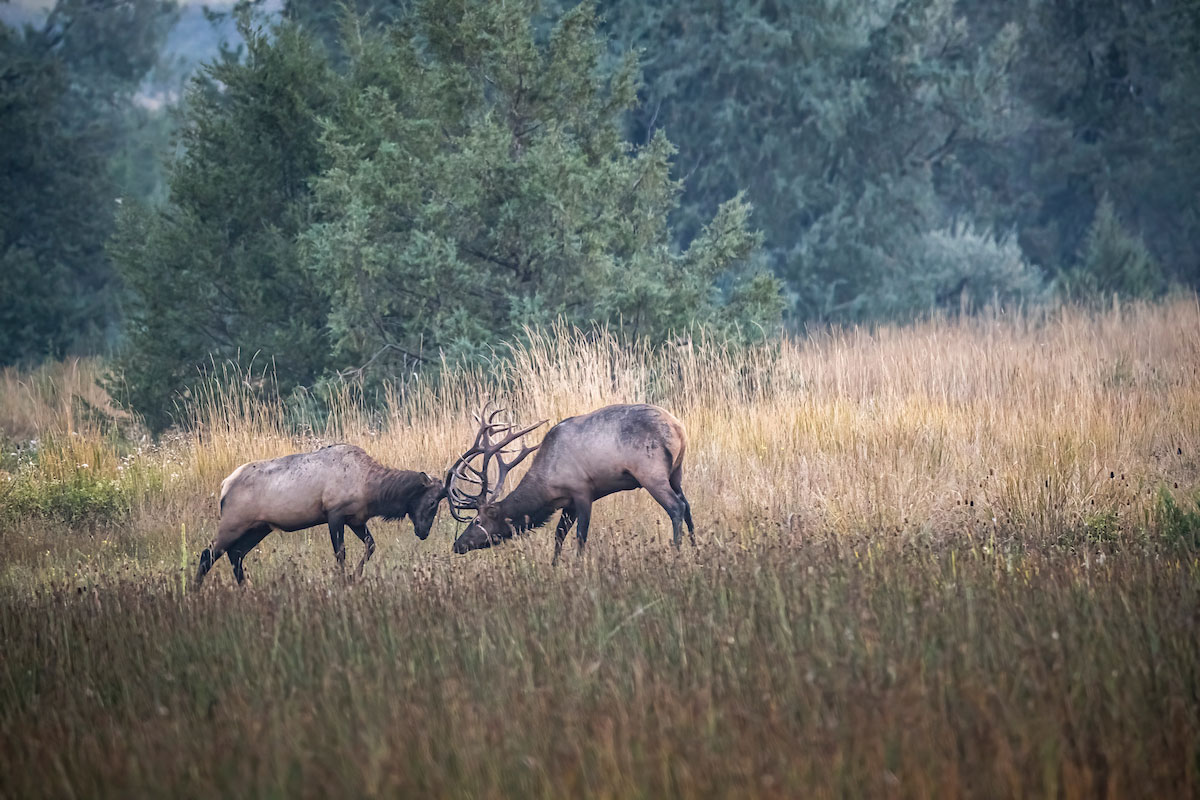
It’s important to note that Hunting District 411, along with many other special-permit units in Montana, has way more elk than the state’s management plan prescribes. Although the Wilks’ 454 agreement, along with the others approved by Montana’s Fish and Wildlife Commission last summer, don’t materially affect population dynamics of the districts where they’re approved, the uproar among Montana’s resident elk hunters has less to do with population benchmarks than with a trend many say favor landowners at the expense of public hunters.
Hunters who don’t normally engage in public policy discussions fell over themselves to decry these agreements as robbery of a public resource. Others claimed it’s a form of government welfare to give elk tags to landowners who offer in return a tiny amount of carefully managed access. The 454 agreements, along with a wider reconsideration of elk management in Montana, even gave rise to a grassroots movement, the Montana Citizens Elk Management Coalition.
Many of these opponents came together to resist FWP’s earlier attempts to reconsider Montana’s elk management, but they gained members and momentum by repeating a narrative that the 454 agreements are contrary to Montana’s tradition of equitable distribution of public wildlife. Marcus Strange, state policy and government relations director for the Montana Wildlife Federation, noted that he supports the concept of 454 agreements because they provide access where it previously hasn’t been available. But he thinks the current rendition of 454 agreements is the first step toward a system of wildlife management where landowners, not the wildlife agency, dictate the fate of wildlife that are supposed to be managed for the public.
“We’re talking about a public resource that should be held in trust for everybody,” says Strange. “The reason people are getting so fired up about 454s is that there is a perception that it’s an inequitable allocation of a public resource.”
Plus, adds Strange, elk simply get people’s attention. “If this was antelope tags, or something else, it probably wouldn’t be as big a deal, but elk strike a chord with people the way that no other creatures in Montana do.”
Justin Schaaf takes a longer, more cynical view in his opposition to 454 agreements, especially where the Wilks Brothers are concerned. Schaaf, who is a member of the Elk Management Coalition and active in other hunting organizations, notes that the brothers brought a Texas mentality to Montana when they arrived on the scene a decade ago. Once they learned that a portion of their N Bar Ranch, about 5,000 acres of landlocked public land in what’s called the Durfee Hills, was being accessed by airborne hunters, they tried to trade the land in order to consolidate their private holdings. When that didn’t work, they erected a wildlife-proof fence around the Durfee Hills, effectively blocking the movement of elk from private to public land. That aggressive action left a lot of Montana hunters with a dim view of the Wilks, says Schaaf.
“The fact that these newly authorized 454 agreements started with the N Bar and neighboring ranches, considering the tensions that the ranch has created by trying to privatize elk, didn’t strike most hunters as being in the public’s interest,” says Schaaf, who also noted that the ranch’s decision to pick disabled kids to receive the bull tags feels “slimy in a way that’s hard to describe.”
“It basically boils down to ‘kids with cancer can’t hunt on my property unless I get a limited-entry bull tag,’” says Schaaf. “If they were that concerned about giving back to sick kids, then they should do it with no expectation of a payback.”
Landowner Tags and Public Access in Other States
But scratch beneath the surface of the 454 dust-up, and you see deeper implications of Montana’s tags-for-access program.
Opponents look southward, to Colorado, Utah, and New Mexico, all states that have engaged in some sort of private-access agreements that have, over time, tilted in favor of landowners and toward the commercialization of public wildlife.
These folks are likely to mention Utah’s Cooperative Wildlife Management Units (CWMUs), which are large ranches that receive a negotiated number of trophy bull or buck tags that the landowners can sell or transfer to eligible hunters. In return, these landowners have to provide a certain amount of public access to the 10 percent of hunters who draw tags for the area. Many CWMU landowners hire outfitters to broker the premium tags and then guide the hunters who buy them. The public hunters typically are escorted to areas of the ranch with smaller bucks or bulls than the paying clients get to hunt.
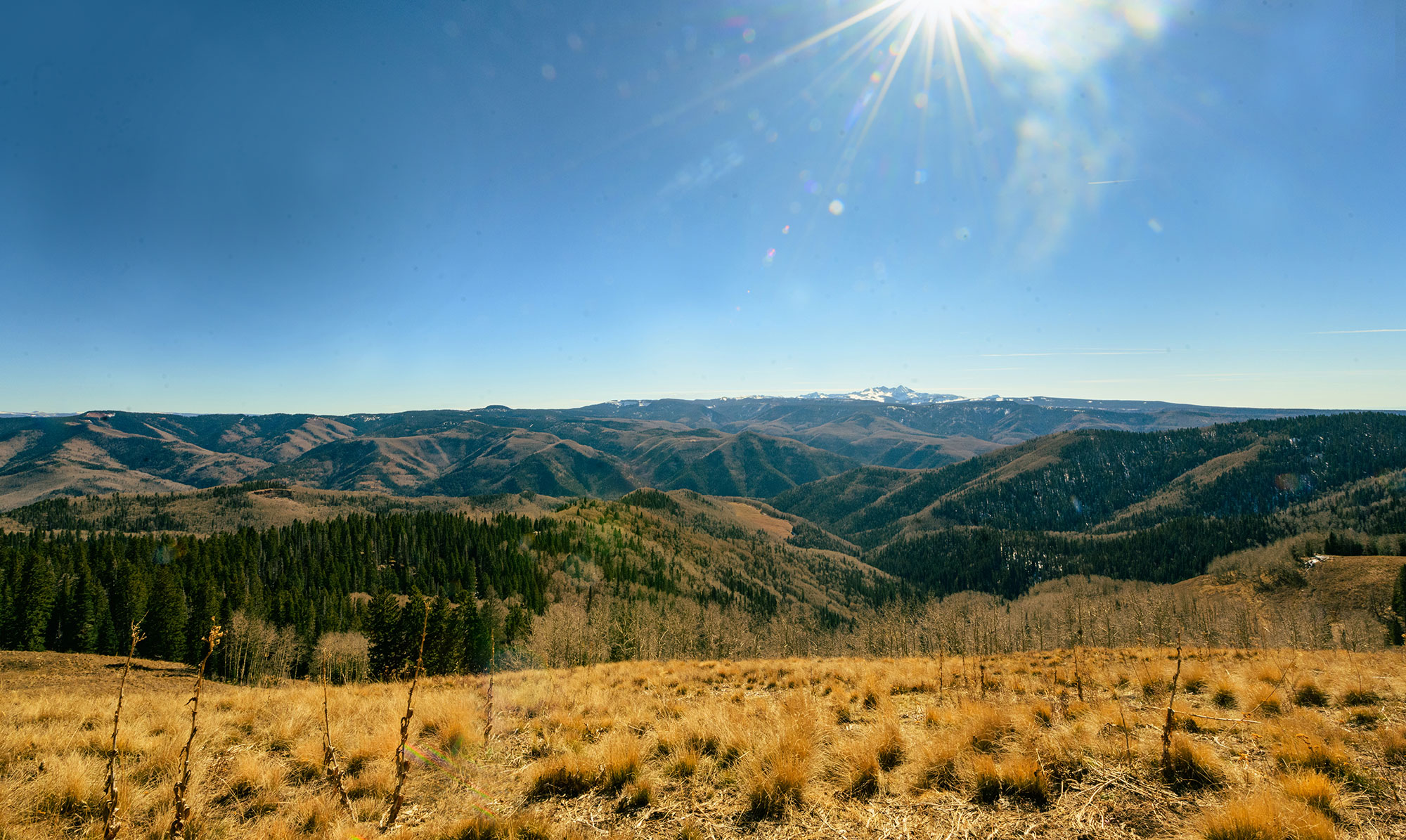
Utah started its CWMU program in the early 1990s with a handful of cooperating ranches. At last count, 125 landowners enrolled over 2 million acres of Utah land in the program. The program has received mixed reviews. On the one hand, it’s opened up thousands of acres of wildlife-rich private ground that would otherwise be locked up. But there’s a strong feeling, which dates from the dawn of the program, that CWMUs are “a token attempt to appease members of the general hunting community by perfunctorily providing them with a few complimentary permits so that they think they are deriving a substantial benefit from a program that is slanted greatly toward the financial interests of landowners,” wrote an early critic of the program. “At worst, it is an inequitable system that resembles the old European game-law system that favored nobility at the expense of the peasantry and essentially grants CWMU operators their own exclusive hunting preserves.”
READ NEXT: On a Colorado Elk Hunt, Any Legal Bull Is a Trophy
The worry, say critics of Montana’s 454 agreements, is that it’s a short ride from providing landowners with bull permits that they have to use themselves to providing them permits that they can then transfer to paying customers.
“It’s a dink-and-dunk process of stripping away opportunities from the public,” says Schaaf. “The one thing that these wealthy landowners haven’t been able to buy is an elk tag, but they’ve now found a way to get one anyway. It’s death by inches for the average hunter.”
Acceptance vs. Opposition
But Mark Taylor, the attorney who facilitated last year’s 454 agreements on behalf of his resident and non-resident clients, says that 454 agreements, while far from perfect, are meeting the goals of their enabling legislation. They are achieving more elk harvest and they are allowing access that probably wouldn’t be provided without the agreements. He noted that the Wilks Brothers provided even more access than that stipulated in the 454 agreements. More than 200 resident cow-elk hunters were given free access to the N Bar, and the bull hunters who had the 454 tags weren’t limited to raghorns or juvenile bulls but were given permission to kill whatever bull they desired.
As to why these seemingly minor administrative allowances have caused such an uproar, Taylor paraphrases Mark Twain.
“Twain said that ‘whiskey’s for drinking and water’s for fighting.’ In Montana, elk hunting isn’t far behind water,” says Taylor, who thinks opponents are using the agreements for their own organizational health.
“The political changes in Montana have left certain environmental organizations without the historical influence they once had, and they are trying to remain relevant with their members, who should be wary of the differences between advocating for policy and political activism,” says Taylor. “Elk management should start with biological goals for the species versus social science and what is politically best for the species. Organizations which are opposed to 454 agreements, or want to materially constraint their utility and utilization, might want to consider striking a more collaborative pose versus attempting to sell conflict to their members as the mechanism for change.”
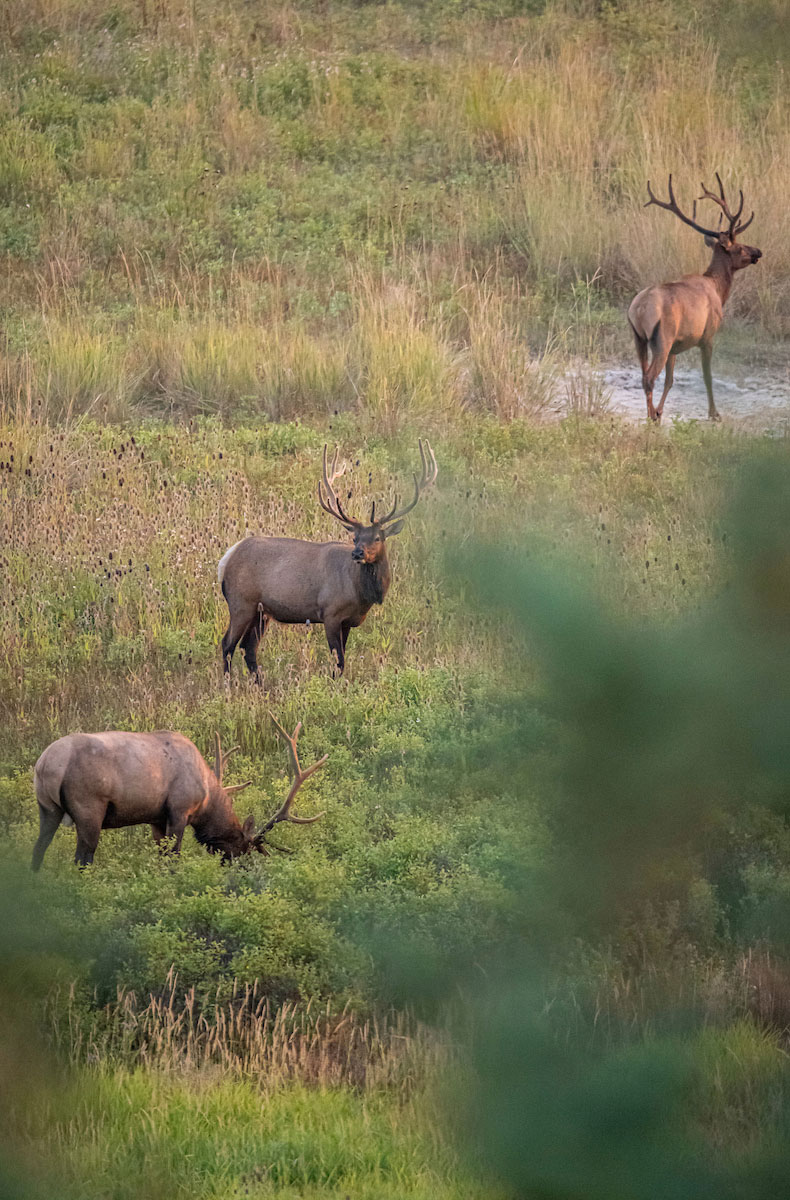
He further suggests that hunters “do their part if they want to hunt private land. Research areas (made easier by digital mapping apps), knock on doors, develop relationships with the landowners, be willing to help landowners with tasks like branding, harvest, weed spraying, or fixing vast stretches of fence in hard-to-reach locations that continually get torn down by either winter conditions or wildlife, or do something the landowners cannot readily do for themselves.”
But Doug Krings, a board member for the Montana chapter of Backcountry Hunters & Anglers who hails from Taylor’s hometown of Lewistown, says all those best-practices for gaining access are unlikely to get the attention of wealthy landowners who want that one thing their money can’t buy: a trophy bull tag.
“When I graduated high school here in 1998, there were places you couldn’t hunt, but generally if you knocked on a door you could get permission,” says Krings. “But back then there were also only 700 elk in the entire range. These big ranches are getting bought because they now have so many elk and access is limited. The 454s are just the tip of the iceberg. The landowners are going to say how successful they were with three tags, and next year they’re going to want more. You watch. There’s going to be a bill next session that says landowners with X number of acres will get X number of tags and they can take X number of buddies. We’re going to have private-land tags, and then we’re going to be just like New Mexico or Utah or Colorado” where landowners can profit from the public’s wildlife.
If these agreements are as egregious as Krings and other opponents claim, then why are they increasing in number and scale? Krings blames the state’s move toward hyper-partisan politics for the shift in traditional views of wildlife management.
“We’re going to lose what we’ve had because of people whose political party becomes the Dallas Cowboys to them,” says Krings, who says many of his elk-hunting friends who hate the idea of landowner tags go along because they’re supported by high-profile activists in their own party. “My buddies won’t call them out for doing something wrong, even if they don’t like it. And all of a sudden, the Republicans will decide that it’s cool to have landowner tags and you’ll have a whole bunch of people who never would have agreed with that supporting it because it’s their team and you can’t be against the Cowboys if you’re a Dallas Cowboys fan.”
Both Strange and Schaaf claim the outcome doesn’t have to be that stark. They point to the work of the Montana Citizens Elk Coalition, which is advocating for improvements to 454s along with innovative access solutions. Among those improvements are an earlier application date for 454 aspirants, mandatory harvest reporting, a return to ratios that provide more public benefit, and a more equitable way to pick public hunters.
But this month, just as the Coalition was gaining members and influence, the legal equivalent of a cluster bomb detonated in Montana’s wildlife-management circles. A property-rights group, United Property Owners of Montana, filed a lawsuit against Fish, Wildlife & Parks and the Fish and Wildlife Commission claiming that the public process for managing elk and setting hunting regulations in Montana is unconstitutional.
The suit charges that “Defendants must make elk management decisions based on elk population levels and landowner tolerances—not the ‘equitable’ considerations it has used to punish private property owners who do not allow public access and to reward powerful special interest groups.”
Detractors were quick to denounce the lawsuit. “In essence,” said the Montana Chapter of Backcountry Hunters & Anglers, “UPOM wants to turn Montana’s time-tested wildlife model on its head. The lawsuit directly attacks Montana’s long-standing tradition of public hunting and equitable wildlife management.”
Whether the lawsuit has merit or not is the topic of heated debate this week among Montana’s elk hunters, but most who read the suit’s text note that it claims “there are around 50,000 excess elk in the state above the maximum population levels set by the Defendants themselves.”
As Lewistown’s Krings put it, “I may not get a chance to hunt a bull elk again, but the way it’s going there’s going to be a whole lot of cow hunting to be had in Montana while we save the bulls for the landowners.”

